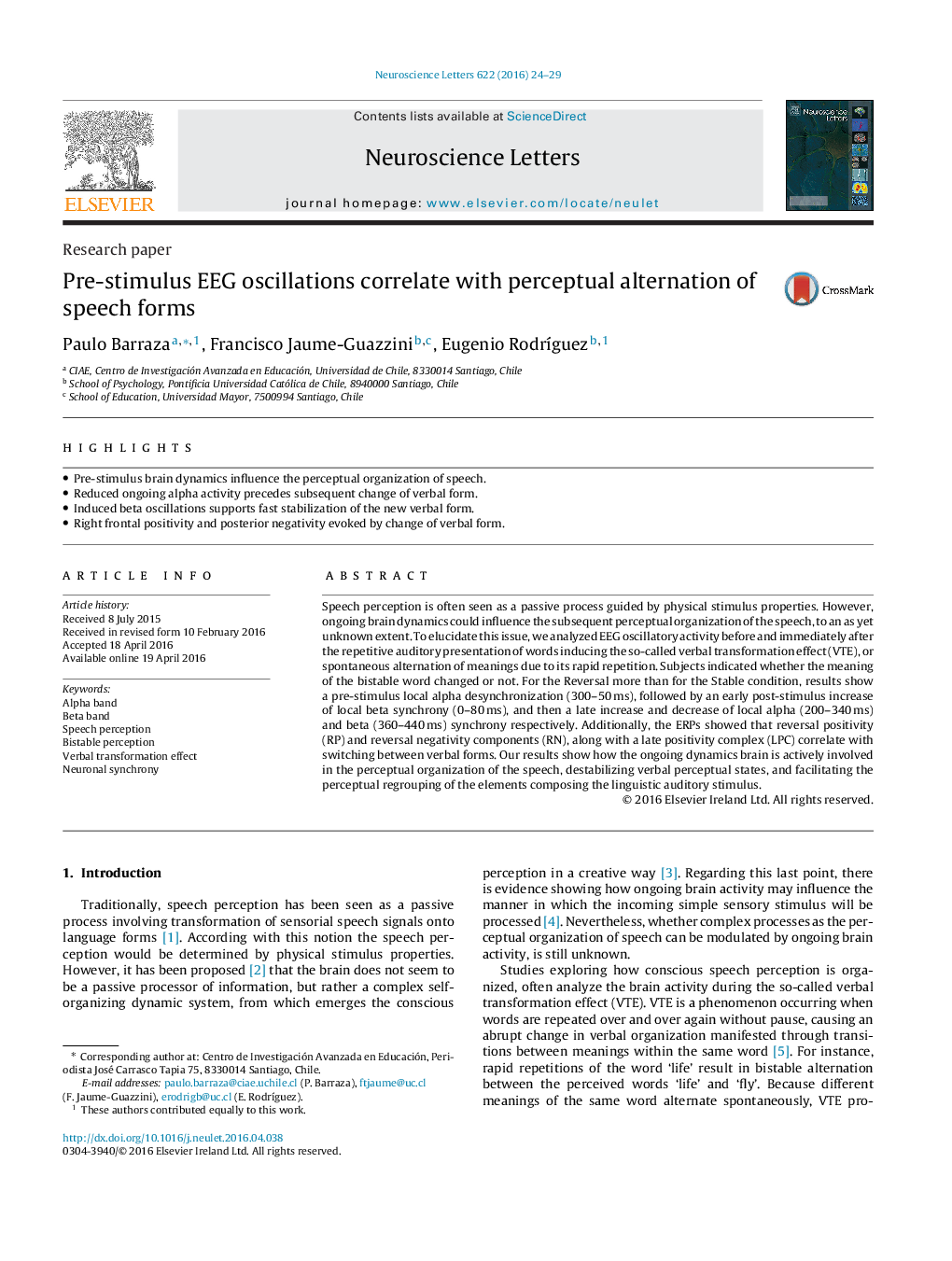| Article ID | Journal | Published Year | Pages | File Type |
|---|---|---|---|---|
| 6279265 | Neuroscience Letters | 2016 | 6 Pages |
Abstract
Speech perception is often seen as a passive process guided by physical stimulus properties. However, ongoing brain dynamics could influence the subsequent perceptual organization of the speech, to an as yet unknown extent. To elucidate this issue, we analyzed EEG oscillatory activity before and immediately after the repetitive auditory presentation of words inducing the so-called verbal transformation effect (VTE), or spontaneous alternation of meanings due to its rapid repetition. Subjects indicated whether the meaning of the bistable word changed or not. For the Reversal more than for the Stable condition, results show a pre-stimulus local alpha desynchronization (300-50Â ms), followed by an early post-stimulus increase of local beta synchrony (0-80Â ms), and then a late increase and decrease of local alpha (200-340Â ms) and beta (360-440Â ms) synchrony respectively. Additionally, the ERPs showed that reversal positivity (RP) and reversal negativity components (RN), along with a late positivity complex (LPC) correlate with switching between verbal forms. Our results show how the ongoing dynamics brain is actively involved in the perceptual organization of the speech, destabilizing verbal perceptual states, and facilitating the perceptual regrouping of the elements composing the linguistic auditory stimulus.
Related Topics
Life Sciences
Neuroscience
Neuroscience (General)
Authors
Paulo Barraza, Francisco Jaume-Guazzini, Eugenio RodrÃguez,
